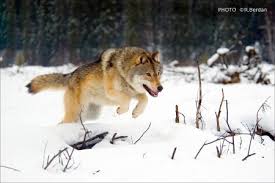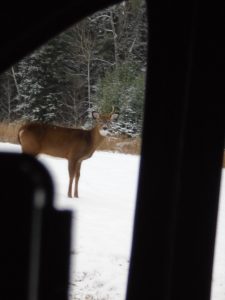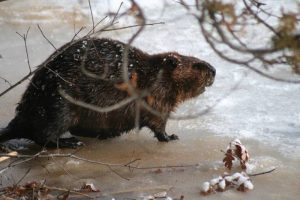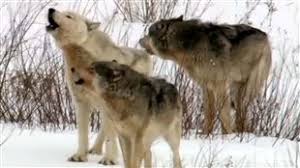WOLF BOUNTIES by RALPH BICE
From Wednesday, October 8, 1975
Thought I’d mention about the bounties that were paid for many years to anyone who had managed to capture, shoot or kill a wolf.
Several people have written about when the bounties started but there are differences in the dates so I am not even going to suggest when the policy was started. One thing is correct, when the bounties were first paid it was in hopes the reduction in the number of wolves would save some livestock. Apparently wolves had discovered that sheep and young cattle were good eating, and much easier to catch than wild game.
I believe the first bounty paid was $10.00, quite a sum of money a hundred years ago. The first I knew of bounty it was $15.00 and this was raised to $40.00 just a year or two after world war one. I know the first wolves I trapped, this in the fall of 1923, I was paid $40.00 for each one. Trouble was at that time Quebec and Manitoba were paying only $15.00 and I think it was proven that a lot of wolves taken in these two provinces close to the Ontario border wound up in Toronto. So, after a few years, it was again dropped to $15.00. The last records I can find when I received a bounty of $15.00 was in 1933. Since then it had been $25.00.
Listening to a story about wolf bounties from away back sounded like for a while bounties were $35.00.

You presented your wolf at the local magistrate and he issued a cheque after cutting the ears off the pelt. Wolf hides were of little value.
The Story
Seems like there was a line called Bell’s Line, named after the surveyor who had ‘ran’ it. On the one side you took wolf skins to Minden or Haliburton. On the eastern side it was quite a distance, perhaps Renfrew. Two uncles of mine happened to shoot a wolf that Fall and it was on the wrong side of the line and it cost more to go and collect the bounty. The buyer who they dealt with said the pelt was of no value and was about to put it in the fire when my grandfather asked if he could have the bounty if he could collect it.
They said “yes” but you would have to lie.
He said he could collect and not lie.
The next time he went to Haliburton he took the hide into the magistrate’s office, put it on the desk and then started a story about hunting or fishing. They did not have all of the world’s problems to discuss that are the usual topic of conversation today.
The magistrate took a pair of shears, cut off the ears and put them in an envelope along with the necessary information. Finally, he asked, “Issac, where did you get it?”
Grandad gave the required information; the magistrate looked up in amazement and said, “But Issac, I can not pay you the bounty here.”
“That’s all right,” replied Issac, then just put the ears back on and I will take it some place I can.
The magistrate saw the joke was on him and grandad got his cheque.
Once I found a wolf in the woods, or rather the dog found it. It was frozen, required a lot of work to thaw it and skin it. When I presented it for the bounty I was told it was not possible as I had found it dead. I decided there and then that if I ever found another dead wolf I would not make the same mistake again.
I was at a meeting concerning wildlife more than twenty years ago and some of the clubs were asking for the wolf bounty to be dropped. Naturally those of us who would be affected objected but the groups finally achieved their aim.. One of the arguments was that it was too costly. And of course the unproven theory that wolves were needed to keep animals in balance and that they only killed the weak and sick.

Records going back thirty years show that the average kill for timber wolves to be about 1500. Brush wolves about half that number though there has been a decided increase in brush wolves in the last decade. The largest amount paid for both these species has been just about $65,000. Compared with the cost of some other projects this does not seem like such a large sum. Especially when you take into consideration the fact that during the years the arguments were going on deer hunting licences were doubled from $5.00 to $10.00. Since there were close to 200,000 deer hunters in Ontario the extra revenue from this alone would more than compensate for the bounties then being paid.

We were told that there would be predator control programs and these were tried but the cost was terribly high. These figures have never been made public but from what I have been told there is good reason to keep these costs under cover.
Most control programs were started late in the season. If you use the Ken Clark method the wolves should be taken in September and October when the pelts are of little value. Later trappers are too busy taking fur so little effort is made to take wolves.
Wolf pelts bring a fair price on the market but with the high wages no one takes the time to bother with wolves.
Some sort of bounty or reimbursement could be paid to trappers to encourage them to go after wolves. The few deer that are left are in trouble, as well as beaver. Wolves do have to eat. But while no one wants the wolves eliminated something could and should be done to protect the few deer that are left, that is if we ever want the deer herd to come back to even a portion of what it once was.
